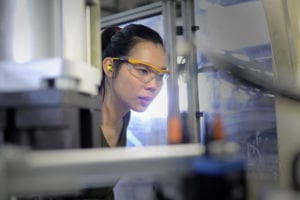On a fundamental level, our society can be divided into base and superstructure. The former comprises resources like factories, industries, warehouses, raw materials, land, and more, that generate revenue for a country. On the other hand, superstructure refers to society’s institutions and cultural elements like religion, tradition, judiciary, and more.
Now, coming back to the base. Businesses and industries bring in a huge amount of money that ensures the seamless operation of a society. Even though industries play an integral role in a country’s growth and development, very few people have comprehensive knowledge about different tools, equipment, and systems installed on an industrial site.
What is an automated material handling system?
A few decades ago, the introduction of advanced technology, digitization, and automation[1] completely revolutionized the way factories and the manufacturing sector work. In this article, we will highlight the basic features, principles, and benefits of automated material handling systems.
Material handling is a procedure that involves moving goods, packing, storing, and unpacking a variety of products over a short distance in a manufacturing plant or a warehouse.
There are two ways in which goods can be carried from one point to another: manually and through automated technology. What is manual material handling? It uses human or physical force to lift, move, store, or retrieve all industrial products and goods.
Generally, organizations are dependent on animal or human labour for a manual handling system. Lowering, lifting, pulling, pushing, restraining, holding, and carrying are some activities that fall under manual material handling.
Automated material handling systems (AMHS) are advanced, computer-controlled systems that move, handle, and store materials in manufacturing, warehousing, and distribution environments. These systems, which include conveyors, automated guided vehicles, robotics, and sortation systems, are designed to improve efficiency, reduce labour costs, and enhance safety. AMHS optimise material flow, streamline operations, and support just-in-time production, playing a crucial role in modern supply chain management and logistics.
Features of an automated material handling system
Automated material handling systems utilize upgraded technology to build efficient computerized systems that require minimal human assistance for moving, locating, retrieving, or storing products or goods. Here is a brief insight into some of the many features of automated material handling systems:
- They are faster, easily scalable, and more agile. Additionally, the operator can also adapt automated equipment or system to simultaneously carry out more than one task.
- Controllers [2], conveyors, wheels, casters, automated storage, and retrieval systems are some of the many components of an automated material handling system.
- Automated material handling systems are exclusively designed to handle the routing, identification, and delivery of material to the right machine or system. This is also applicable for removing or placing the material from different load ports.
- Irrespective of the transport, automated material handling systems deliver optimum results when the material information is visible and available in all the systems used by the operational staff.
- These systems use the material and carrier tracking systems to spot the material at the pickup point. Next, they move towards the second destination and successfully transport the material at hand.
What are the functions of automated material handling?
Automated material handling systems perform functions like transporting, sorting, and storing materials. They efficiently move goods through warehouses or factories, sort items for distribution, and store products using automated shelving and retrieval systems. These functions enhance operational efficiency, reduce manual labour, improve accuracy in sorting and picking, and increase storage density. They are integral in managing inventory and streamlining supply chain processes in various industries.
Multiple benefits of automated material handling systems
Previously, human labour was one of the most important tools in an industrial setting. However, with automation technology and systems, onsite operators only need to provide these systems with accurate coding and directions to meet the required production rates.
Below we have carefully curated a list of benefits and advantages of onboarding best-in-class automated material handling systems:
- Efficient use of human labour
According to experts and professionals, one of the biggest drawbacks of industrial automation is that it leads to redundant work profiles and unemployment. However, this equipment ensures that operators and administrators get time to relax, take breaks, and don’t exhaust themselves in meeting daily targets.
While machines and equipment take care of labour work, workers only have to assist and supervise, allowing them to put their best foot forward at work.
- Better time management
Time management is the key to efficient business functioning. There are several repetitions in industrial processes due to many factors like equipment failure, poor management, functional inaccuracies, and more. In automated material handling systems, machines are already encrypted with pre-planned instructions that offer better results in a short span of time.
Automated machines reduce the amount of time it takes to transport material from one point to another. How does that happen? In industrial automation processes, every step becomes more accurate and predictable, improving the overall cycle time. In addition, this also helps in giving customers a more precise delivery date.
- Minimal contamination
With the rising concern of global warming and environmental degradation, people from different sectors of our society are stepping up to take responsibility for building a more green and sustainable future. As industries are equipped with a diverse range of systems and machines, they contribute to the pollution levels of the environment.
The floating pollutants are easily stirred by the functioning of machines, contaminating the air and the product that is under production. Hence, as automated material handling systems reduce movements, they ensure that the industry has a minimal environmental impact.
Build a more efficient and automated world with Schneider Electric
Schneider Electric is a leading player in the electrical, digital, and automation industry. Our team has designed a wide portfolio of automated products, equipment, and solutions.
For industrial automation and control systems, we offer Human Machine Interfaces (HMI), Industrial Automation Software, sensors, RFID systems, and more.
To know more about our products and services, explore our website today!


